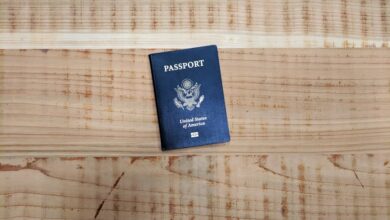DS 260 Made Easy: Tips and Tricks for a Smooth Application Process

The DS 260 is an online application form that is an integral part of the immigration process for individuals seeking a visa to enter the United States. It is used by the U.S. Department of State to collect biographical information and background details from visa applicants. The DS 260 is a crucial step in the visa application process as it provides the U.S. government with essential information to determine an applicant’s eligibility for a visa.
Key Takeaways
- DS 260 is an online form required for immigrant visa applicants to provide personal and background information to the US government.
- The purpose of DS 260 is to determine an applicant’s eligibility for a visa and to conduct security checks.
- Before filling out DS 260, applicants should gather all necessary supporting documents and review their personal information for accuracy.
- Tips for filling out DS 260 include being honest, providing complete answers, and saving the form frequently.
- Common mistakes to avoid in DS 260 application include providing incorrect information, leaving fields blank, and not disclosing previous visa denials.
Understanding the Purpose of DS 260
The DS 260 serves several purposes in the visa application process. Firstly, it allows the U.S. government to gather necessary information about the applicant, including personal details, family background, education, and employment history. This information helps immigration officials assess an applicant’s eligibility for a visa and determine if they meet the requirements set forth by U.S. immigration laws.
Secondly, the DS 260 helps streamline the visa application process by allowing applicants to submit their information online. This eliminates the need for paper forms and reduces processing time. By completing the DS 260 accurately and efficiently, applicants can ensure that their visa application is processed in a timely manner.
Preparing for DS 260 Application
Before starting the DS 260 application, it is essential to gather all necessary information and documents to ensure a smooth and efficient process. Begin by collecting personal details such as full name, date of birth, and passport information. Additionally, gather information about your immediate family members, including their names, dates of birth, and passport details if applicable.
Furthermore, it is crucial to have a complete record of your education history, including degrees earned, institutions attended, and dates of attendance. Similarly, gather information about your employment history, including job titles, dates of employment, and employer contact details.
In addition to personal and professional information, you may also need supporting documents such as birth certificates, marriage certificates, or divorce decrees. It is important to have these documents readily available to ensure accurate completion of the DS 260 application.
Tips for Filling out DS 260 Form
| Tip | Description |
|---|---|
| Start Early | Begin filling out the DS 260 form as soon as possible to avoid any last-minute rush. |
| Be Accurate | Ensure that all the information provided in the form is accurate and up-to-date. |
| Complete All Sections | Fill out all the sections of the form, including the optional ones, to avoid any delays in processing. |
| Provide Supporting Documents | Attach all the necessary supporting documents, such as birth certificates and passports, to the form. |
| Review Before Submission | Review the form thoroughly before submitting it to ensure that all the information provided is correct. |
| Keep a Copy | Make a copy of the completed form for your records and future reference. |
Filling out the DS 260 form accurately and efficiently is crucial to avoid delays or complications in the visa application process. Here is a step-by-step guide to help you navigate the form:
1. Start by carefully reading each question and providing accurate and truthful answers. It is important not to omit any information or provide false details, as this can lead to serious consequences.
2. Take your time to understand each question before answering. If you are unsure about a particular question, seek clarification or consult with an immigration attorney.
3. Be mindful of the formatting requirements for dates, addresses, and other details. Follow the specified format to ensure consistency and accuracy throughout the application.
4. When answering questions about your travel history, provide complete and detailed information, including dates, countries visited, and purpose of travel.
5. For questions regarding criminal history or previous visa denials, be honest and provide all relevant information. Failure to disclose such information can result in visa denial or even permanent ineligibility for future visa applications.
Common Mistakes to Avoid in DS 260 Application
While filling out the DS 260 form, it is important to be aware of common mistakes that applicants often make and take steps to avoid them. Here are some common errors to watch out for:
1. Inaccurate or incomplete information: Double-check all information provided in the application form for accuracy and completeness. Even minor errors can lead to delays or denials.
2. Failure to disclose relevant information: It is crucial to disclose all relevant information, including criminal history, previous visa denials, or immigration violations. Failure to do so can result in serious consequences.
3. Inconsistent information: Ensure that the information provided in the DS 260 form matches the information on other supporting documents, such as passports or birth certificates. Inconsistencies can raise red flags and lead to further scrutiny.
4. Missing deadlines: Be mindful of the deadline for submitting the DS 260 form. Missing the deadline can result in delays or even the rejection of your visa application.
5. Not seeking professional assistance when needed: If you are unsure about any aspect of the DS 260 application process, it is advisable to seek professional assistance from an immigration attorney or consultant. They can provide guidance and ensure that your application is accurate and complete.
Supporting Documents Required for DS 260
Along with the DS 260 form, applicants are required to submit supporting documents to validate the information provided in the application. The specific documents required may vary depending on the type of visa being applied for, but here are some common documents that may be requested:
1. Passport: A valid passport is essential for visa application. Ensure that your passport is valid for at least six months beyond your intended stay in the United States.
2. Birth certificates: Provide birth certificates for yourself and any accompanying family members to establish family relationships.
3. Marriage certificates or divorce decrees: If applicable, provide marriage certificates or divorce decrees to establish marital status and any previous marriages.
4. Educational documents: Include transcripts, diplomas, or degrees to verify educational qualifications.
5. Employment records: Provide employment records, such as letters of employment, pay stubs, or tax returns, to establish work history and financial stability.
6. Police clearance certificates: Some visa categories may require a police clearance certificate from each country where you have resided for a certain period of time.
It is important to gather these documents well in advance of submitting your DS 260 application to ensure a smooth and efficient process.
How to Submit DS 260 Application
Once you have completed the DS 260 form and gathered all necessary supporting documents, it is time to submit your application. The DS 260 form is submitted online through the Consular Electronic Application Center (CEAC) website. Here are some instructions to guide you through the submission process:
1. Access the CEAC website and log in using your unique case number and invoice ID.
2. Review your completed DS 260 form to ensure accuracy and completeness.
3. Upload all required supporting documents in the specified format and size.
4. Pay the required visa application fee using the accepted payment methods.
5. Submit your DS 260 application.
It is important to keep a copy of your submitted application and supporting documents for your records. Additionally, make note of any confirmation numbers or receipt numbers provided upon submission.
In case you encounter any technical difficulties during the submission process, it is advisable to contact the appropriate U.S. embassy or consulate for assistance.
Tracking Your DS 260 Application Status
After submitting your DS 260 application, it is natural to want to track its progress and know the status of your visa application. The CEAC website provides a tracking system that allows applicants to check the status of their DS 260 application. Here’s how you can track your application:
1. Visit the CEAC website and log in using your unique case number and invoice ID.
2. Navigate to the “Check My Visa Application Status” section.
3. Enter the required information, including your case number, date of birth, and passport number.
4. Click on the “Submit” button to view the status of your DS 260 application.
It is important to note that processing times may vary depending on various factors, such as visa category, country of origin, and current workload at the U.S. embassy or consulate. If there are delays or issues with your application, it is advisable to contact the appropriate U.S. embassy or consulate for further assistance.
Dealing with DS 260 Application Rejection
In some cases, a DS 260 application may be rejected or denied. It is important to understand the common reasons for rejection and how to address them. Here are some common reasons for DS 260 application rejection and tips on what to do if your application is rejected:
1. Incomplete or inaccurate information: If your application is rejected due to incomplete or inaccurate information, carefully review the rejection notice and identify the specific issues. Correct any errors or provide the missing information and resubmit your application.
2. Failure to meet eligibility requirements: If your application is rejected because you do not meet the eligibility requirements for the visa category you applied for, consider consulting with an immigration attorney to explore alternative options or determine if you can address any deficiencies.
3. Fraudulent or misleading information: If your application is rejected due to fraudulent or misleading information, it is crucial to seek legal advice immediately. Providing false information can have serious consequences, including permanent ineligibility for future visa applications.
If your DS 260 application is rejected, it is important to carefully review the rejection notice and follow the instructions provided. In some cases, you may be able to appeal the decision or reapply after addressing the issues that led to the rejection.
DS 260 Interview Preparation
Once your DS 260 application is approved, you will be scheduled for an interview at the U.S. embassy or consulate in your home country. It is important to prepare for the interview to increase your chances of a successful outcome. Here are some tips to help you prepare:
1. Research the visa category you applied for and familiarize yourself with the requirements and expectations.
2. Review your DS 260 application and supporting documents to refresh your memory on the information provided.
3. Practice answering potential interview questions, focusing on providing clear and concise responses.
4. Dress appropriately for the interview, presenting yourself in a professional manner.
5. Arrive early for the interview and bring all necessary documents, including your passport and appointment letter.
During the interview, be honest, confident, and respectful. Answer questions clearly and provide any additional information or documents requested by the consular officer.
Conclusion and Final Thoughts on DS 260 Application Process
The DS 260 application process is a crucial step in the visa application process for individuals seeking entry into the United States. By understanding the purpose of the DS 260, preparing thoroughly, and avoiding common mistakes, applicants can increase their chances of a successful visa application.
Careful attention to detail, accurate completion of the DS 260 form, and timely submission of supporting documents are essential for a smooth and efficient process. Additionally, tracking the status of your application and being prepared for the interview can help ensure a positive outcome.
It is important to remember that each visa application is unique, and individual circumstances may vary. Seeking professional assistance from an immigration attorney or consultant can provide valuable guidance throughout the DS 260 application process.
In conclusion, the DS 260 application process requires careful preparation, attention to detail, and adherence to immigration laws and regulations. By following the guidelines outlined in this article, applicants can navigate the process with confidence and increase their chances of a successful visa application.



